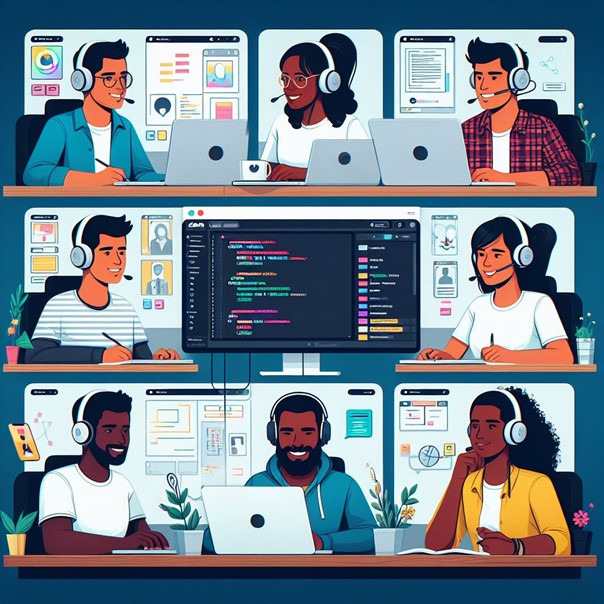New work and the consequences for the invention process
New work and changed expectations by a younger generation of employees on how workplaces should be organized and how to collaborate seemed to be for many just buzzwords. But the pandemic with its sudden increase of home office work places and remote collaboration, especially among knowledge workers, changed this and made new work a reality for many. That this trend is real and also affecting the IP world was confirmed by the results of an survey amongst IP professionals, which was presented first at the IP dagen conference in Oslo 9th November 2022. Here are the slides of the presentation:
Also other national and international surveys presented at this conference discussed the effect of those trends on IP work in companies, e.g. the IP Trend Survey conducted jointly by the Norwegian IP office and Norwegian Innovation agencies. Here most recipients agreed, that the current digitalization of IP work is largely affecting the way, they are working. Most prominently employees were expecting the reduction of face-to-face meetings and an increase of remote work as well as remote training in their organization. Finally, employees considered that the biggest challenge for their everyday IP work was outdated skills, which are not sufficient for the new work reality.
Effects on the innovation process
Many companies applied before the advent of new work classical innovation processes, like the stage-gate process. The stage-gate process can also be seen in the broader context of waterfall project management models. Waterfall models are linear and sequential models, where multiple phases are following each other with clear objectives for the individual phases. The returning to a previous phase is not possible anymore once it is finished. The output of each phase is used as the input of the next phase and there is no progress review between the individual stages. This has some advantages, like the simple planning and controlling of the individual stages and the easy to understand deliverables at each stage, but also many disadvantages like the inflexibility to changes of the scope, no continuous testing of the product with the customers, since the product is only ready at the end of the waterfall process, and an accumulation of risks with each stage. This approach is now challenged by the realities of new work.
R&D, IP, marketing and other departments, which should closely work together, are more and more remote and work in silos, so that they cannot intervene quickly into the innovation process. This makes the stage-gate process susceptible for the costly mistakes, for example by the development of non-IP protectable solutions or solutions without market demand until product maturity, because IP and marketing were not included at an early stage and could not intervene.
The alternative is to react on the new work reality and adopt methods, which were used in digital and remote working industries like software development for decades, such as agile project management models. The agile model fosters a team-based and iterative approach with more flexibility and a continuous improvement in the development process. Compared to the waterfall model the agile model produces already during the development process working components and minimum viable products (MVPs), which can be continuously tested and improved with the end customer as well as coordinated with IP and marketing.
The systemic approach of creating inventions on demand in agile environment is also called invention harvesting. Here inventions are created based on the market needs and customers preferences. The inventions can be iteratively tested and improved in the form of a minimum viable product as defined by Eric Ries in his Lean Startup book. This also means that multiple MVPs can be created and tested against each other leading to alternative technical solutions to the same problem. This approach is especially valuable in digitally transforming industries, since digital innovation has more often a disruptive character and incremental innovation cannot address the real market needs that well.
A pioneer of invention harversting is Dr. Robert Klinski, who was invited to the first module of this year’s MIPLM at the CEIPI, University of Strasbourg, as a dinner speaker to explain the key concepts of invention harvesting and discuss with the students current application examples. Dr. Klinski has over 20 years of experience in invention harvesting and helped his clients in the 5G area alone to generate over 100 inventions on demand. Additionally, he is also supporting clients in the areas of artificial intelligence, internet of things, blockchain and cryptography with his medium-sized law firm Patentship.



